Better late than never, I present you with today’s batch of wildlife photos, but also importune you to send in your photos lest we run out. Today’s batch comprises bird photos (and one mammal) from ecologist Susan Harrison from UC Davis, whose text and IDs are indented. You can enlarge the photos by clicking on them.
Fall 2023 and winter 2024 birds
Here is my 50th contribution, featuring various creatures seen in the western U.S. in late 2023 and early 2024.
Western Nevada (August)
Pinyon Jays (Gymnorhinus cyanocephalus), which live in colonies that move around after the seeds of Pinyon Pines (Pinus monophylla and others), and which appear to be in decline:
Juniper Titmouse (Baeolophus ridgwayi), in the same habitat and much more plentiful than Pinyon Jays:
Malheur National Wildlife Refuge, eastern Oregon (September)
Common Nighthawk (Chordeiles minor) day-sleeping on a branch:
Peregrine Falcon (Falco peregrinus) waiting by a bird feeder:
Virginia Rail (Rallus limicola) lurking beneath reeds:
American White Pelicans (Pelecanus erythrorhynchos) sailing overhead:
Great Horned Owl (Bubo virginianus) juvenile in cottonwoods (Populus):
Burrowing Owls (Athene cunicularia), adult and juvenile at a nest:
Steens Mountain, looking east to the Alvord Desert:
Pronghorn (Antilocapra americana) enjoying an irrigated alfalfa field:
Butte Valley, south-central Oregon (November)
Bald Eagles (Haliaeetus leucocephalus), overwintering:
Ferruginous Hawk (Buteo regalis), overwintering:
Sacramento Wildlife Refuge (January)
Common Gallinules (Gallinula galeata):
Northern Harrier (Circus hudsonius):
Peregrine Falcon, juvenile:
Northern Pintails (Anas acuta):







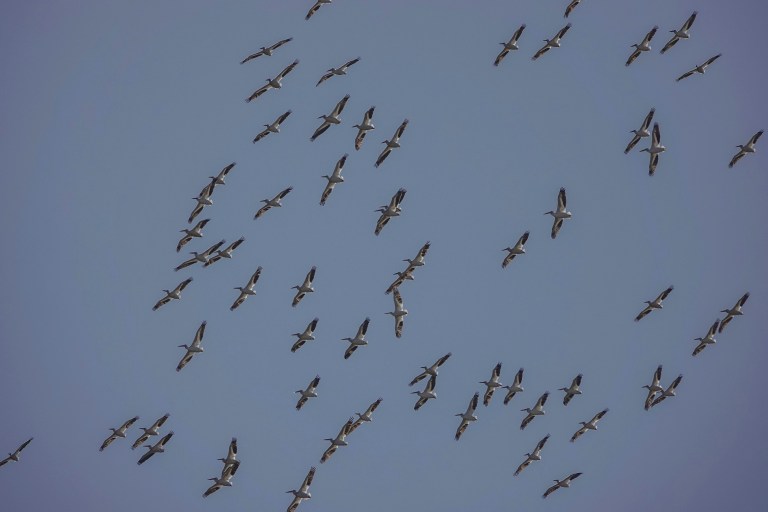



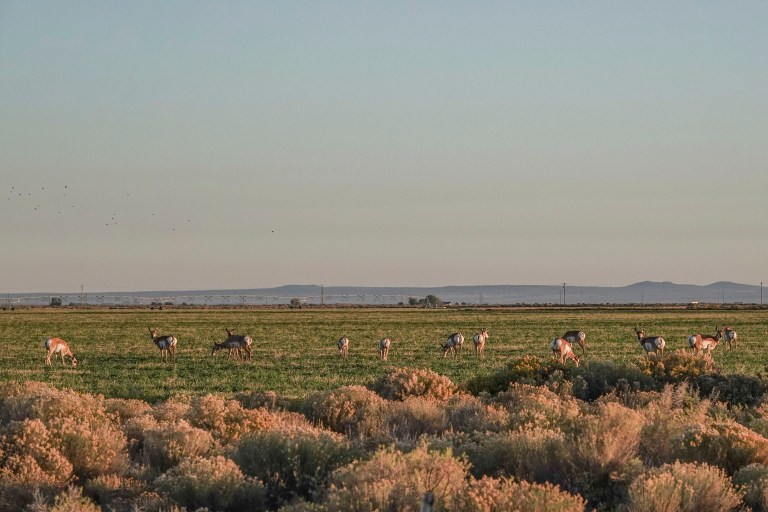


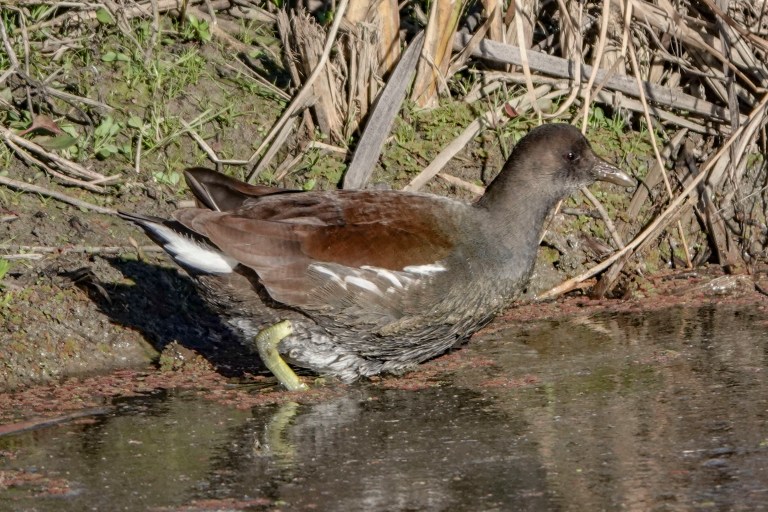
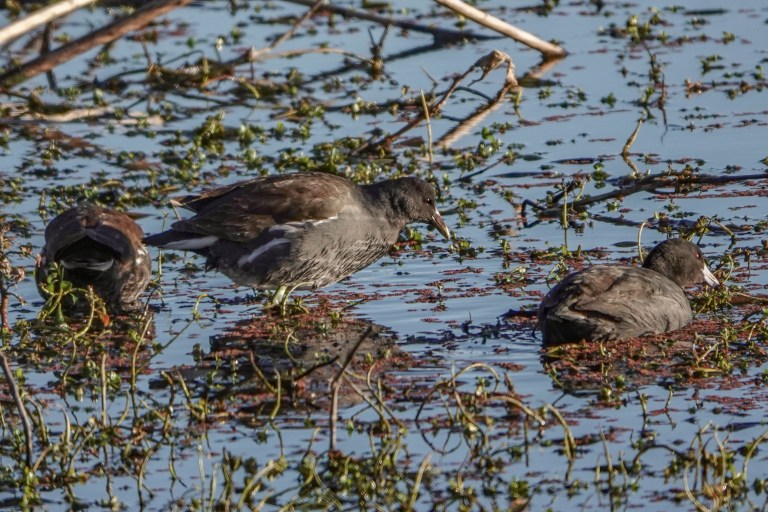
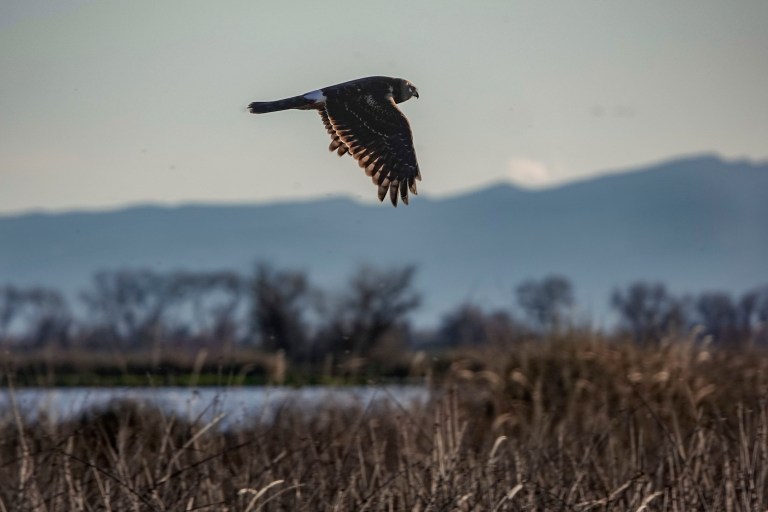
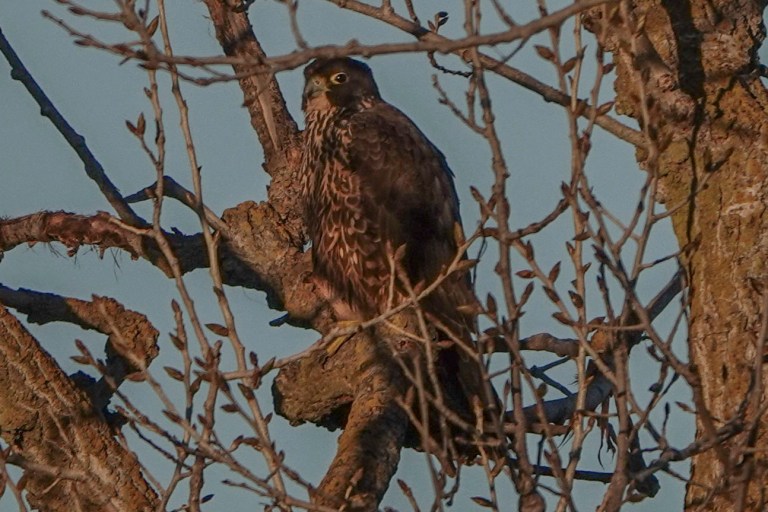
Just splendid – that rail is interesting because I remember the flightless rail story – Madagascar, I think..
Thank you for these great pictures. Beautiful shot of the Nighthawk!
Beautiful. Nighthawks are so interesting. They emit an incredible Boom! when diving for insects at dusk. They are truly unique.
Thanks! I’ve heard that the dive-BOOM is part of courtship, but don’t know for sure. It is spectacular!
You visit some beautiful and amazing places, Susan. Thank you for sharing them with us.
Thank you Jim!
In yesterdays posting of tortoise photos I mentioned watching the PBS documentary “Tortoise in Peril.”
Since many readers here are serious birders, I have a question. If you watch the documentary, can you confirm that all the birds shown are ravens? Or are crows also represented?
There are many congregations of black birds in the documentary, but ravens tend to be solitary. Maybe ravens are getting blamed more than they should?
Nature writer/presenter Christian Cooper recently had a documentary where he discussed Ravens killing the baby desert tortoise. In this video, there are hundreds of ravens, not crows, so I don’t know about their solitary nature. They used lasers to disperse the birds. With so many, I don’t see how the tortoises can survive. It will take a lot of effort.
Edit: sorry about the long URL, but I clicked on it and it seemed to work. After a short commercial.
https://www.google.com/search?q=Christian+Cooper+talks+about+ravens+and+tortoises&sca_esv=9d08de6d61fee8a2&source=hp&ei=7y-9Zf3hOY-G0PEPkNSkoAc&iflsig=ANes7DEAAAAAZb09__NLhSbCyCyTNXYbI44ZAzylkGci&ved=0ahUKEwi9ldyloI2EAxUPAzQIHRAqCXQQ4dUDCBc&uact=5&oq=Christian+Cooper+talks+about+ravens+and+tortoises&gs_lp=Egdnd3Mtd2l6IjFDaHJpc3RpYW4gQ29vcGVyIHRhbGtzIGFib3V0IHJhdmVucyBhbmQgdG9ydG9pc2VzMgUQIRigATIFECEYqwJIppsBUABYg5oBcAB4AJABAJgBWKABuxyqAQI0ObgBA8gBAPgBAcICDhAuGIAEGLEDGMcBGNEDwgILEAAYgAQYsQMYgwHCAhEQLhiABBixAxiDARjHARjRA8ICCxAuGIAEGLEDGIMBwgIFEAAYgATCAhEQLhiDARjHARixAxjRAxiABMICDhAAGIAEGIoFGLEDGIMBwgIIEAAYgAQYsQPCAggQLhiABBixA8ICChAAGIAEGEYY-wHCAgUQLhiABMICDhAuGIAEGIoFGLEDGIMBwgIIEAAYgAQYyQPCAgsQABiABBiKBRiSA8ICCxAuGIMBGLEDGIAEwgIIEC4Y1AIYgATCAgYQABgWGB7CAgsQABiABBiKBRiGAw&sclient=gws-wiz#fpstate=ive&vld=cid:1c529933,vid:29-n-iVLefk,st:0
Thanks for that. The link worked. (I won’t try listing the short YouTube link I found, as those short YouTube links seem to create problems here.)
Cornel Labs’ “All About Birds” says this about ravens: “Common Ravens aren’t as social as crows; you tend to see them alone or in pairs except at food sources like landfills.”
https://www.allaboutbirds.org/guide/Common_Raven/id#
This corresponds to my experience, given that I don’t frequent landfills. And it seems to answer my question about crows. But wouldn’t crows be similar opportunists? I wonder if raven congregations actively keep crows out?
Well, Cornell Labs may have the answer to that as well: “In winter, young ravens finding a carcass will call other ravens to the prize. They apparently do this to overwhelm the local territory owners by force of numbers to gain access to the food.” Crow probably don’t have a chance against the larger ravens.
https://www.allaboutbirds.org/guide/Common_Raven#
Your clip is from episode 4 of a 2023 National Geographic series “Extraordinary Birder (with Christian Cooper).” Apparently you can buy it on YouTube ($2.99 HD), but I think I have an appropriate app on my smart tv.
And, yes, I was able to find that series on Disney+ (without reference to National Geographic). There are two segments to that episode that mention ravens and tortoises. The last segment goes into more detail, describing the use of a strong green laser to disperse large congregations of breeding ravens near Palm Springs — one of the big “oases” in the surrounding desert that attracted raven populations in the first place.
Aside from scaring the ravens, the laser is supposedly benign. But I imagine that it could damage raven eyes if it lingers for more than a brief moment. And I wonder if just dispersing the birds really helps tortoise populations. Culling ravens somehow would seem to be more effective.
I’m glad you found the series with free streaming. It’s really outstanding, and Christian’s enthusiasm for birds is contagious.
I thought the same about culling…
Congratulations, Susan, on your 50th contribution to WEIT, always superb! Today, I especially love the Nighthawk, Ferruginous Hawk, and Burrowing Owl.
Thank you John! You’re an inspiration. 😊
Sincere thanks to both of you.
Sad to hear Pinyon Jays are in decline. Is the pinyon pine in decline or is it general habitat loss? I’m guessing it’s a mystery.
Thanks for another terrific set of photos. Congrats on your 50th! I’ve enjoyed every one (assuming I’ve seen them all, but I rarely miss a RWP).
I second this! I love the muted beauty of the Pinyon Jays, and I daresay that’s the most charming photo of a Common Nighthawk that I’ve ever seen.
Thank you both! I think there may be a trend toward less productive Pinyon seed crops… but again, am not sure. They are little-studied birds because of being so nomadic.
Thank you, Susan! And, congratulations on #50 –looking forward to 50 more!
How in the world did you get that rail picture? In my experience, they can be heard but never seen. You must have been lurking more than she was.
Thanks Kathy! I stumbled out of a carload of birders in the ‘wrong’ direction, and there was the rail for about two seconds (no-one else saw it). Been looking for one for a long time!